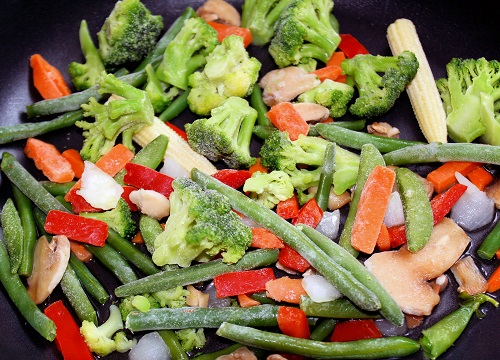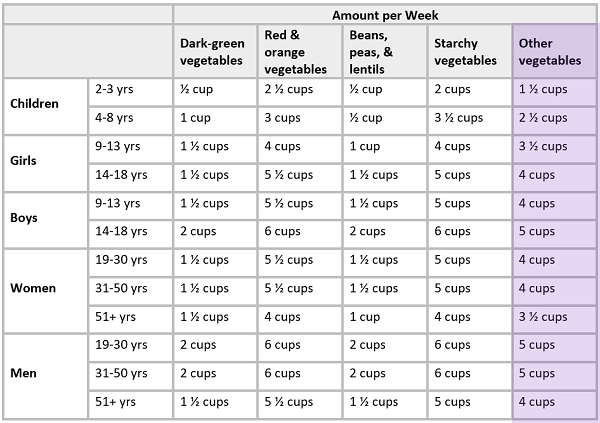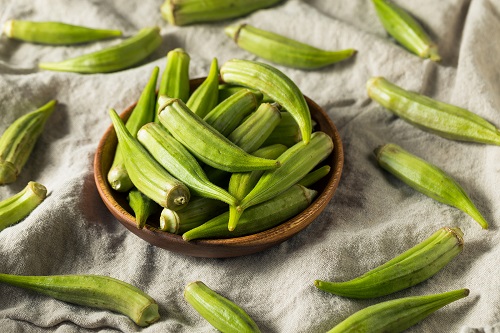We’re nearing the end of our “Food Talk Features” series! We’ve covered almost all the colorful veggie sub-groups. Our last one is a sub-group called “other vegetables.” These vegetables have unique nutrients, so they get their own group!
Each month this year, we are featuring a different food group or sub-group as part of our Food Talk Features… Series. Last month, we said “goodbye” to summer and “hello” to fall and winter fruit options. These fruits are important because they provide us with affordable nutrition even when it’s chilly outside. Winter fruit like citrus contains vitamin C. Vitamin C helps to keep our immune system strong. Check out our Fall and Winter Fruits blog to learn more!
This month, we’re breaking down the fifth and final vegetable sub-group: Other vegetables. You can read our blogs on the other four veggie sub-groups here:

Other vegetables are grouped together because they are unique veggies. They vary in nutrients, so they do not fit in another group of vegetables. No matter the sub-group, all veggies are nutritious and needed in a balanced diet! For example…
- Beans, peas, and lentils are filled with fiber and protein.
- Dark green vegetables contain folate and calcium.
- Red and orange vegetables are known for their high vitamin A content. They get it from their bright red and orange colors!
- Starchy vegetables contain carbohydrates for lasting energy. Some also have potassium—a nutrient we don’t always get enough of in the United States.
Other vegetables also have benefits. We need all types of vegetables to get a good balance of nutrients! [1] Other vegetables include:
- Avocado
- Bamboo shoots
- Bean sprouts
- Cabbage (green, red, napa, and savoy) and lettuce (iceberg or head lettuce)
- Nopales (cactus pads)
- Cauliflower
- Celery
- Cucumbers
- Green beans
- Green bell peppers
- Mushrooms
- Okra
- Onions
- Summer squash (yellow) and zucchini

What are the benefits of Other Vegetables?
This veggie sub-group contains vegetables with a mix of nutrients. Overall, vegetables are a good source of fiber. Fiber is needed for healthy digestion. It is also important for heart health. It helps reduce cholesterol levels and may reduce risk of heart disease. [2]
Vegetables are also a sneaky source of water. In fact, many of the vegetables in this sub-group are 70-96% water! This includes lettuce, cucumber, cabbage, celery, squash, and avocados. Getting enough water through foods and beverages is important for:
- Digestion,
- Brain function,
- And balancing body temperature during activity.
Too little water can cause serious medical problems. [3]
These veggies have other benefits, too. For example, okra is a veggie with a long list of vitamins and minerals. It is a great source of fiber with over 3 grams in 1 cup. One cup of okra also contains nearly 40% of our daily vitamin C and vitamin K needs! These vitamins are used for blood clotting and keeping skin, teeth, and bones healthy. [4]
If you’re looking for even more nutrients, check out mushrooms! Mushrooms are full of antioxidants like selenium (suh-len-ee-um). Mushrooms contain more selenium than any other fruit or vegetable! Selenium protects our body’s cells. [5] Did you know? You can use a damp paper towel to clean mushrooms before eating or cooking. [6]

How much do I need?
The number of vegetables we need every day depends on many factors. Most adults should aim for 1-3 cups of vegetables a day.
To measure out a portion of other vegetables, 1 cup of the veggie (chopped or cooked amount) counts as a 1-cup-serving. For example, 1 cup of cooked or raw mushrooms counts towards 1 cup of your daily vegetables. 1 large green bell pepper (without seeds) is also a 1-cup-serving. Scroll down on the MyPlate Vegetables webpage here. Take a peek at the “Cup of Vegetable Table” for more examples!
Vegetable sub-group suggestions are based on how much we should try to eat each week. Check out this table below to learn how many servings of these other vegetables to aim for each week:

Table Source: Information from the 2020-2025 Dietary Guidelines for Americans
- Children (2-8 years old): 1 ½ – 2 ½ cups
- Girls (9-18 years old): 3 ½ – 4 cups
- Boys (9-18 years old): 4-5 cups
- Women (19-50 years old): 4 cups
- Women 51 years and above: 3 ½ cups
- Men (19-50 years old): 5 cups
- Men 51 years and above: 4 cups

Order up! Recipes with other vegetables you’ll want to try.
It is important to vary our vegetables throughout the week. This helps us get nutrients from all the sub-groups. We don’t need to eat all five vegetable sub-groups every day! Instead, focus on meals and snacks that include different vegetables when possible.
For example, making an omelet with ½ cup of tomatoes and ½ cup of bell peppers counts as 1 whole cup of veggies from different sub-groups!
This veggie sub-group contains so many vegetables… The recipe possibilities are endless! Get your fix of Other Veggies (plus more sub-groups!) with some of these ideas:
- Add chopped onion, celery, or cabbage to soups and stews. These veggies provide added flavor, texture, and nutrition. Try our Chicken Noodle Soup or Vegetable Gumbo Soup. Both have lots of chopped veggies.
- Okra takes the stage with our Jumpin’ Jambalaya—Vegan Style and Spicy Okra in a skillet.
- For more skillet dishes, we love letting squash shine! Try Italian Zucchini, Turkey and Squash Skillet, or Simple Veggie Stir-Fry.
- Serve up a tasty dip like our Ranch Sauce (1 cup nonfat plain yogurt and ½ cup light Ranch salad dressing) with strips of cucumber, celery, bell pepper, or cauliflower pieces. This is a great way to get kids excited about eating veggies!
- Crunch on cucumber and onion in our Cucumber, Tomato, and Onion Salad. You’ll find cucumber in many other salads, too! On our recipe page, search “cucumber” for more!
- Get in some selenium from mushrooms! Go for our Mushroom Reuben Sandwich, Slow Cooker Vegetarian Lasagna (filled with so many yummy veggies), or Rustic Rotini.
- If you’re a lover of nopales, our breakfast Nopales Scramble might be for you!
Other vegetables are so delicious and nutritious! We love the crunch of celery and cucumbers, but the rich flavor of mushrooms has us drooling. What other vegetables are your favorites?
Written by Melanie Ng, Ph.D. Candidate | Edited by Leslie C. Davis, MS, RD, LD, CDCES and the Nutrition Education Team
Posted: October 11, 2021
[4] University of Arizona Cooperative Extension—Okra
